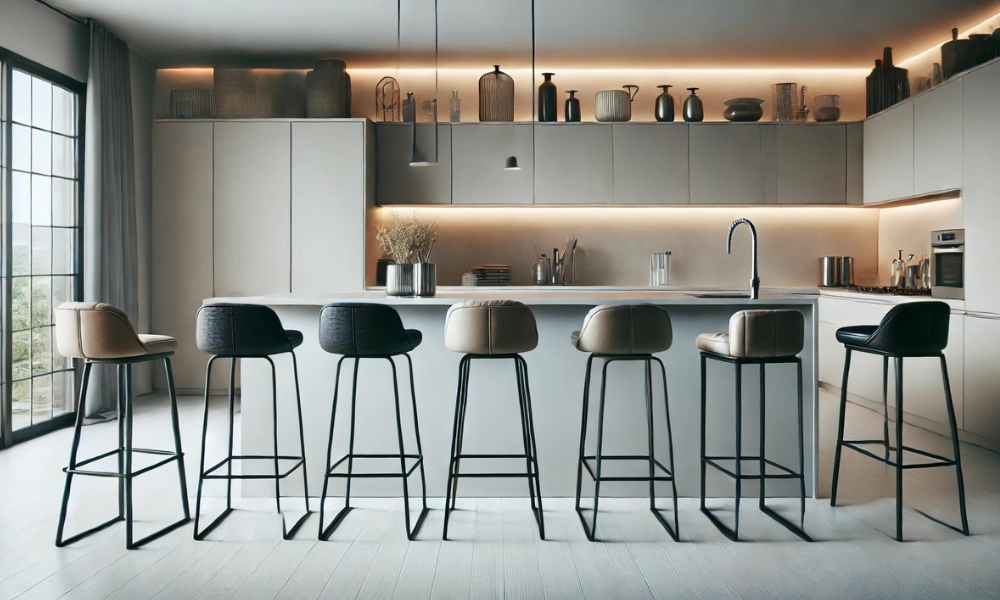Choosing the right bar stool can be the subtle yet significant difference between a well-designed kitchen or bar area and an awkward seating arrangement. Bar stools are not just functional pieces of furniture; they serve as a focal point in your space, marrying style and comfort in one. But to achieve the ideal balance, knowing how to measure bar stools is essential. The following guide will walk you through every step, ensuring your bar Chairs is not only a perfect fit for your counter but also a perfect fit for you.
Why Measuring Bar Stools Matters?
Bar stools must blend seamlessly into your environment—both in terms of style and function. Incorrect stool height can lead to discomfort, making it difficult to sit or rise comfortably. Conversely, stools that are too low or too high can cause physical strain over time. Beyond comfort, the right measurements enhance the visual harmony of your space, creating an inviting atmosphere. Simply put, meticulous measuring ensures that your bar stool complements both the functionality of your space and the overall aesthetic, while providing ergonomic support for extended seating.
Understanding The Importance Of The Right Measurements For Comfort And Style
While bar stools may seem like an afterthought, they are pivotal to the user experience in high-traffic areas like kitchens and dining spaces. Finding the perfect balance between comfort and style requires accurate measurements to ensure optimal seating. A stool that is too tall can make people feel perched uncomfortably, while one that is too short might lead to slouching. It’s a delicate dance between aesthetics and utility, where the wrong height can ruin the overall feel of the space. The right measurements contribute not only to comfort but also to a cohesive, stylish setting.
Step-By-Step Guide To Measuring Stool Height
1. Determine The Table Or Counter Height
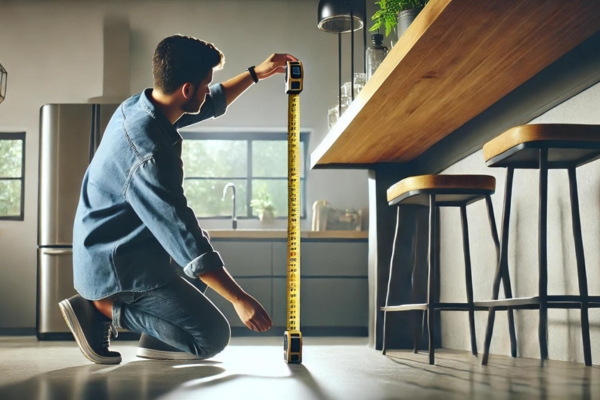
The first and most crucial step is to measure the height of the table or counter where the stools will be used. Using a tape measure, note the distance from the floor to the underside of the counter or table surface. This measurement will be the foundation for determining the correct stool height. Standard counters are typically 36 inches high, while bar-height counters may stand at 42 inches. Knowing this ensures your stools will provide sufficient legroom without overcrowding the area.
2. Decide On The Ideal Clearance

Clearance is the space between the seat of the stool and the underside of the counter. Typically, an ideal clearance ranges between 9 to 13 inches, allowing for comfortable leg movement and seating posture. Less clearance may make it difficult to sit comfortably, while too much space can make the stool feel disproportionately low, causing an unnatural seating position. Achieving the right clearance enhances both comfort and usability.
3. Calculate The Required Stool Height
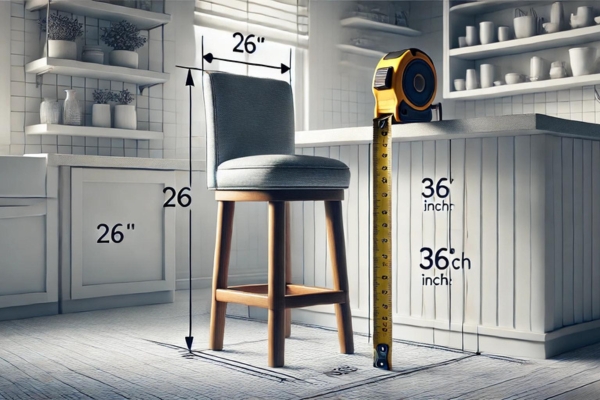
Once you have determined the height of the counter and the ideal clearance, it’s time to calculate the required stool height. Simply subtract the desired clearance (9-13 inches) from the counter height. For example, if you have a 36-inch counter and want a 10-inch clearance, the ideal stool height would be 26 inches. Ensuring your bar Chairs fall within this range will create a harmonious balance between the furniture and the room’s functionality.
4. Use A Measuring Tape
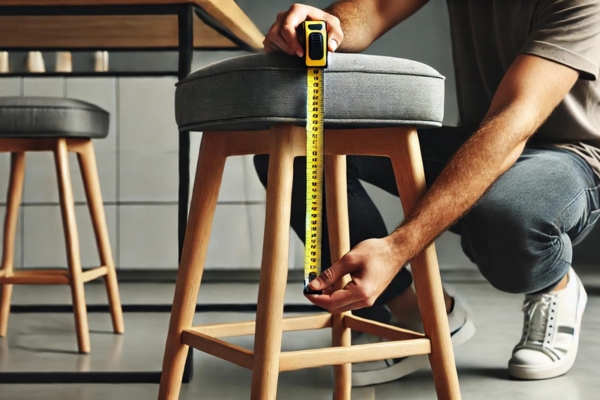
Using a measuring tape, measure the stool’s height from the floor to the top of the seat. For accuracy, it’s important to measure multiple times, especially if the stool has any cushioning, which can affect the height when compressed. Always measure with precision to avoid errors, ensuring your stools will fit perfectly under your counter or table.
5. Check For Adjustable Stools

Adjustable stools offer flexibility and can accommodate a wider range of counter heights and users. If you’re unsure about the exact height or anticipate different users, adjustable stools can be a versatile option. These stools can be raised or lowered easily, adapting to various needs and occasions. It’s a great solution for households with counters of varying heights or frequent guests.
6. Test For Comfort
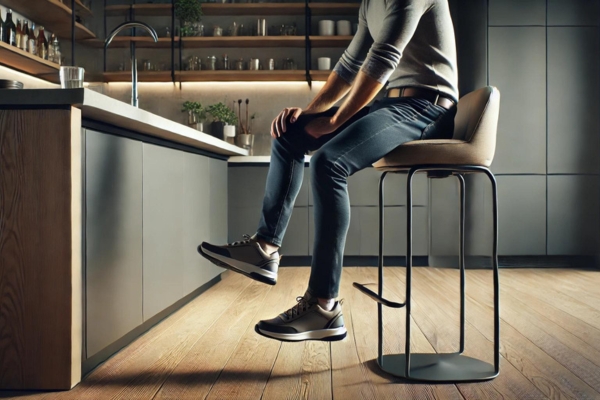
Once the measurements have been taken, it’s essential to test the stools for comfort. Sit on the stool and assess if your legs have enough space and whether you feel at ease. The ergonomic comfort of the stool should be prioritized, How Tall Are Bar Stools are often used for extended periods. Ideally, your feet should rest flat on a footrest or the floor, while your elbows can comfortably rest on the counter if needed.
How Tall Should My Bar Stools Be?
The general rule of thumb is that stools should be 10-12 inches shorter than the height of your counter. If you have a standard 36-inch kitchen counter, the stool height should be between 24-26 inches. For a bar-height counter (typically 42 inches), the stools should be 30-32 inches high. These measurements are not set in stone, however, and can vary depending on individual preferences or specific design needs. Ensuring your bar Chairs are the right height will make a world of difference in both comfort and aesthetic appeal.
How Much Space Should I Leave Between Bar Stools?
To ensure ample seating space without crowding, it’s recommended to leave about 6 to 10 inches between each stool. This allows guests to comfortably sit, move, and get up without bumping into one another. The more space you can afford between stools, the more inviting and relaxed the seating area will feel. However, in smaller areas, the minimum of 6 inches should still be respected to maintain comfort.
What Are The Most Comfortable Bar Stool Dimensions?
Comfortable bar stool typically feature seats that are 15 to 18 inches wide, providing sufficient support without overwhelming the space. Backrests and footrests can also enhance comfort, especially if the stools are used for extended periods. The ideal depth for a bar stool is around 16 to 18 inches, allowing the user to sit back comfortably. The addition of a padded seat can also significantly improve the seating experience, as can a slight curve in the seat for lumbar support. Comfort is a blend of dimensions and personal preferences, but keeping these measurements in mind can guide you toward making the right choice.
Conclusion
Measuring bar stools may seem like a straightforward task, but getting it wrong can lead to discomfort and a visually unbalanced space. By following the steps outlined in this guide, you’ll ensure that your stools are not only functional but also a stylish addition to your home. Remember, the key to a perfect bar Chairs is finding that balance between form and function. The right measurements are pivotal to both comfort and aesthetic appeal, so take your time, measure accurately, and choose wisely.
